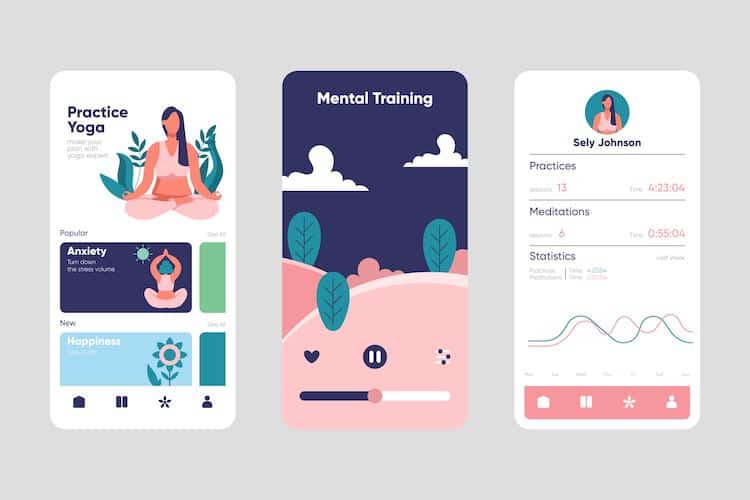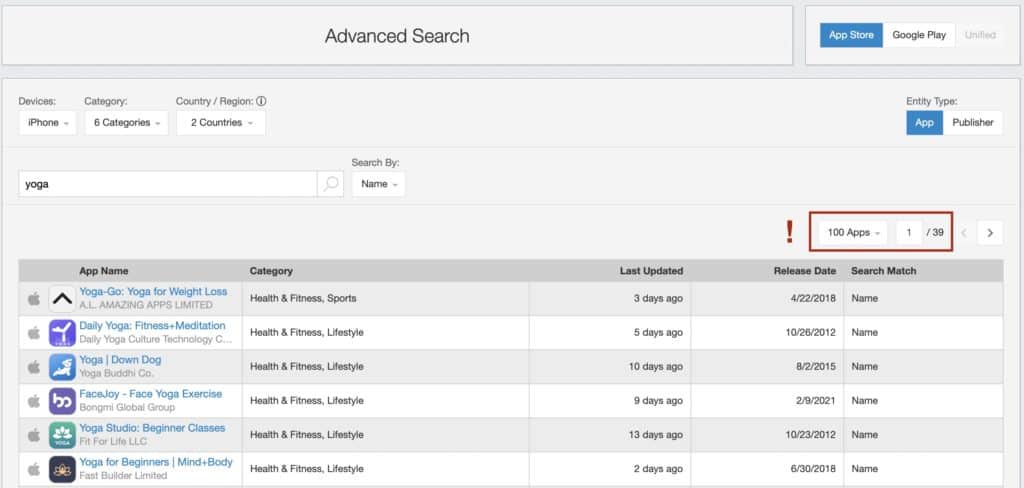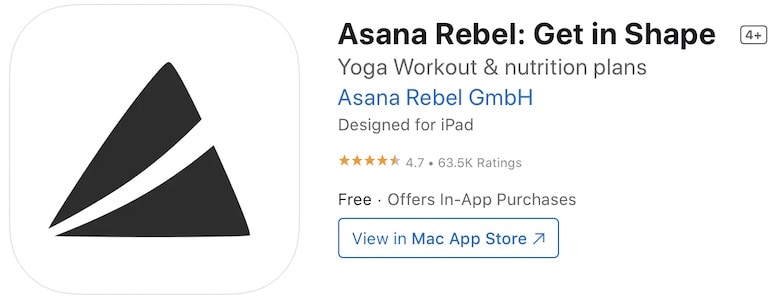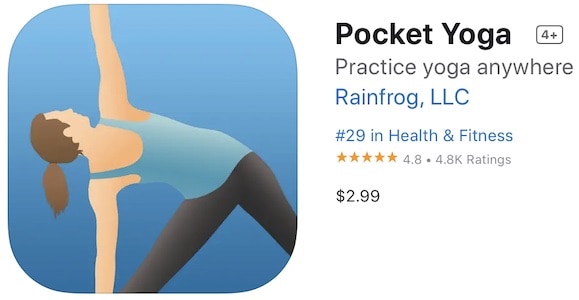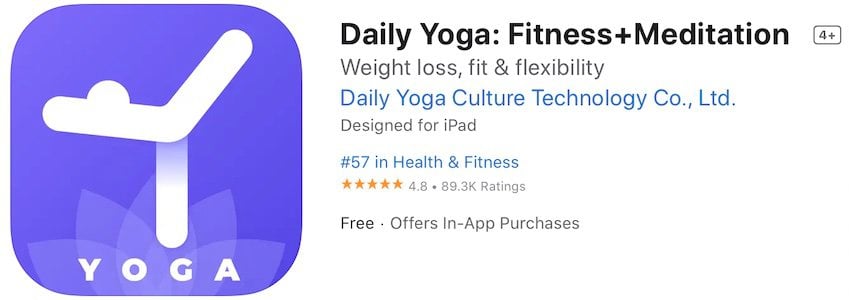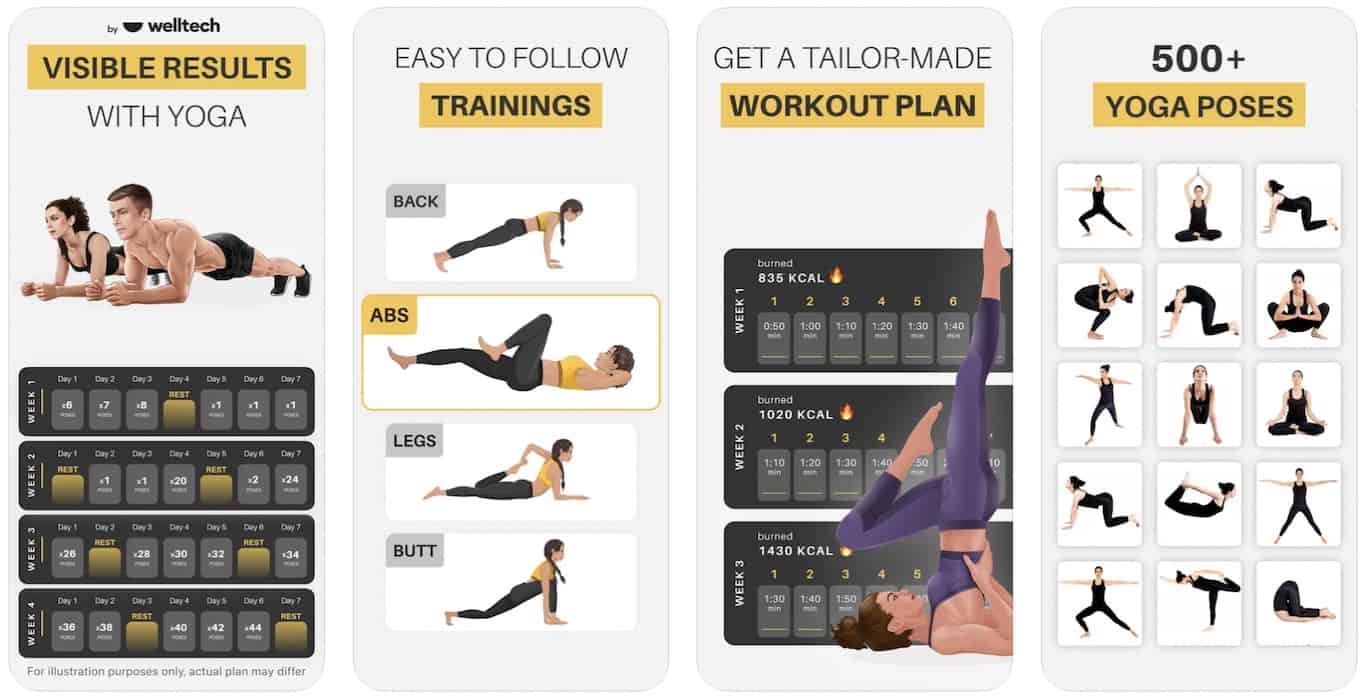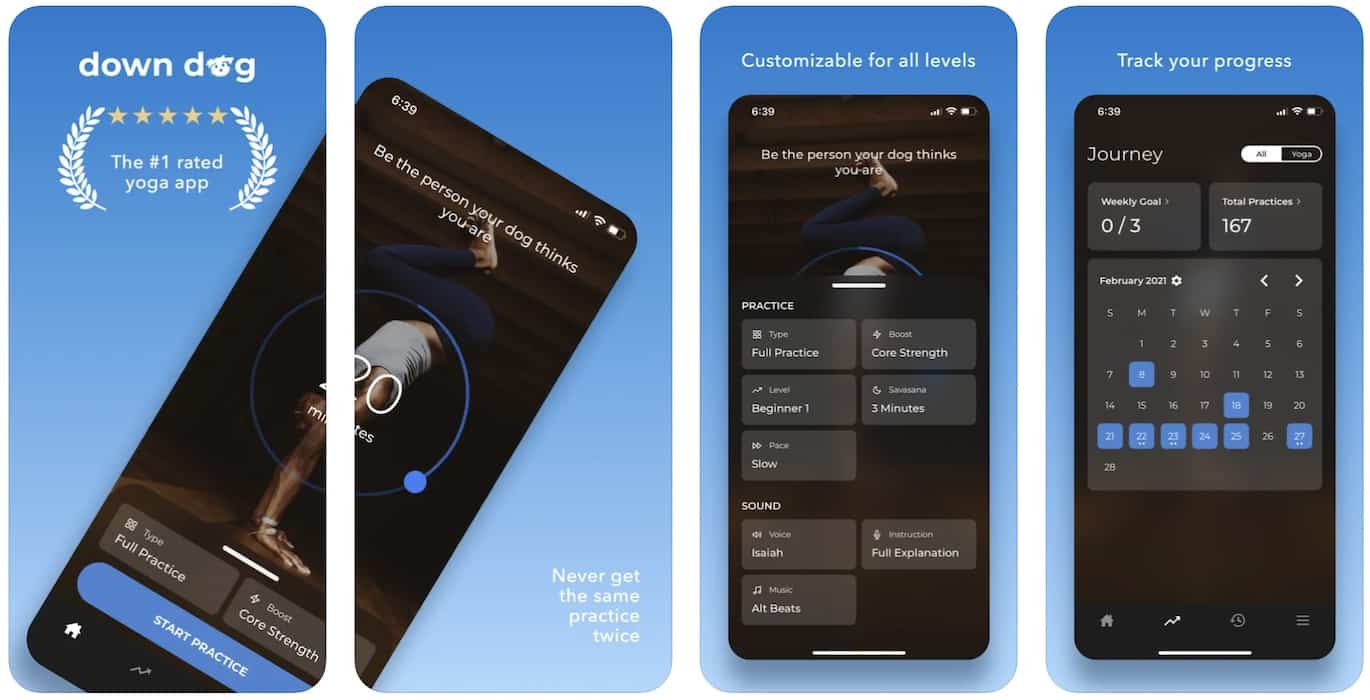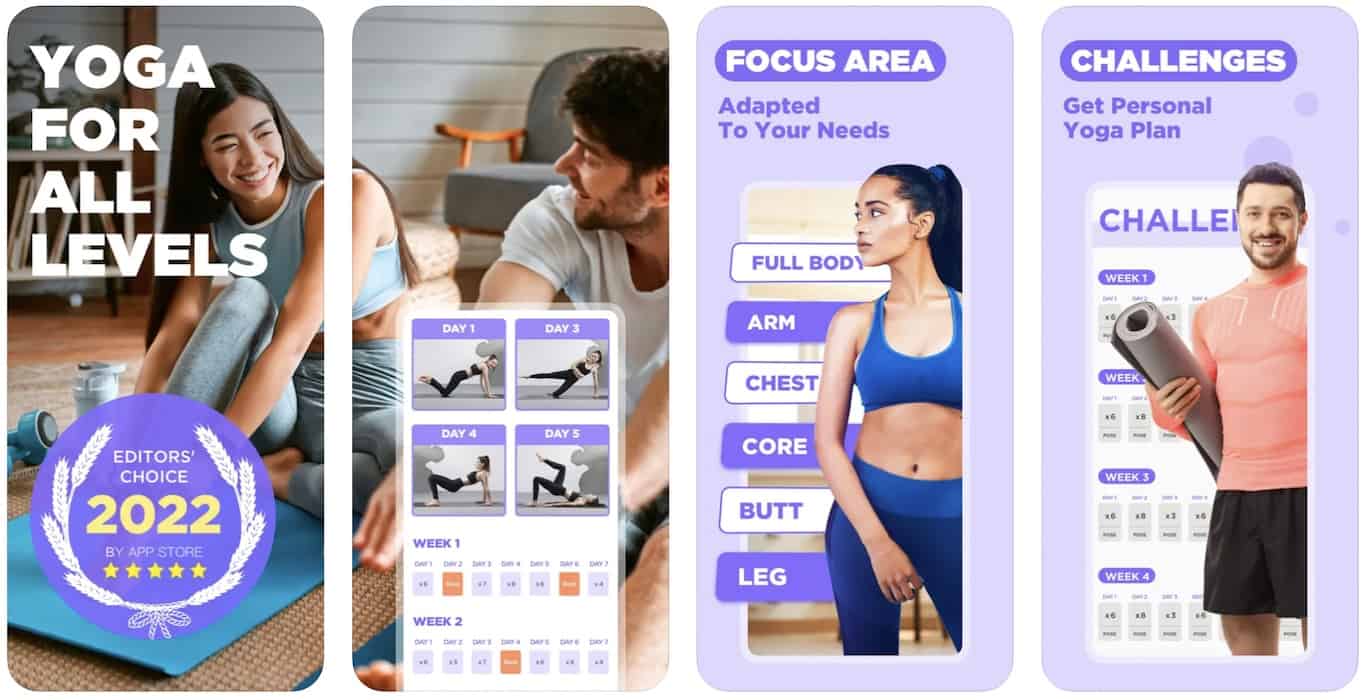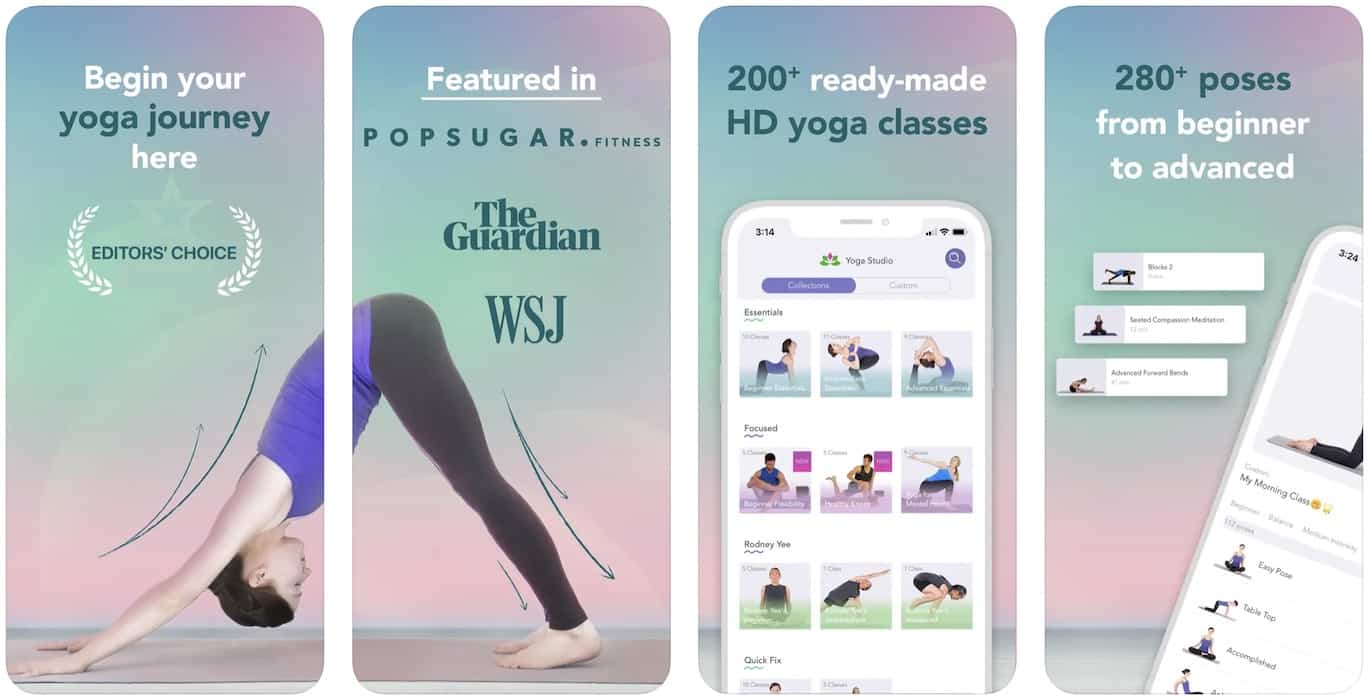Man, I wish I had these yoga apps back in my twenties! All that squinting at the tattered illustrations in my old yoga book, trying to figure out what goes where and wondering why it doesn’t.
Today, mobile apps can make yoga practice much more intuitive and lucid. Of course, as long as the application is well-built. Keep reading if you want to learn how to create a yoga app that will turn heads.
Top Takeaways:
- Yoga app development is a highly competitive niche. You’ll need to focus on a single killer feature to start generating real traction if your business is 100% virtual.
- The most successful yoga apps support various other platforms besides smartphones: smart TVs, tablets, watches, web. Therefore, figuring out what combination of devices brings the most adoption is critical.
Table of Contents:
Why Do People Practice Yoga, and How Can a Yoga App Help?
1. Why Create a Yoga App?
2. The Most Successful Yoga Applications
3. Top Features of a Yoga App
4. Monetization of a Yoga App
5. Tech Stack for Yoga App Development
6. 4 Steps to Make a Yoga App
- Step 1: Market research and tech assessment
- Step 2: Rapid prototype and design
- Step 3: Coding and testing
- Step 4: Deployment and maintenance
7. How Much Does It Cost to Build a Yoga Application?
8. Topflight Experience in Yoga App Development
Why Do People Practice Yoga, and How Can a Yoga App Help?
It’s been a long time since yoga has established itself as a unique fitness category and expanded well beyond the coziness of our living rooms. We can see it by the sheer number of studios popping up left and right on every corner. If I wanted to sign up for a yoga class in Irvine, California, I’d have to choose from 170-something places.
People want to be fit, mentally and physically. And if yoga has proven to deliver on that (at least 300 million people practicing it think so), why not try and package this captivating experience in a mobile application?
The least such an app can do is spare us the initial awkwardness of rigid limbs and unnecessary attention to our clumsiness. Yet, if a yoga app is built right, we can fully enjoy the social experience it has become and its long-lasting wellness benefits with zero exposure.
Why Create a Yoga App?
If you have set your mind to developing a yoga application, you either run a studio and look for new ways to connect with your customers or think that starting a virtual studio is an ideal scenario in the post-COVID world.
I’m with you on that 100%:
- the cost of renting a place gravitates to zero
- you can connect with more customers outside of a brick-and-mortar studio
- you can leverage a hyper-personal approach with practitioners
- new revenue streams via referral marketing and e-commerce
- the convenience of online payments
In fact, the benefits must be so overwhelming you’ll face fierce competition. Sensor Tower counts almost 4,000 mobile apps with yoga in its name. Let that sink in. Four thousand yoga apps — whether 100% virtual classes or extensions to in-person classes — are already fighting for the spotlight.
The good news is that only 6-8 such apps appear among the top 100 health and fitness software. This should raise some serious concerns. Are you ready to bet $80,000 to $120,000 (depending on features) on building a yoga app that might barely pay for itself?
Related: How to develop a fitness app
Because the typical marketing stunt here would sound like, “You should only launch a yoga app if you’re sure you have a 100% unique angle on this practice and something valuable to offer.”
However, if you tell me you envision a digital experience that can perfectly complement your existing business and help you better monetize and broaden your services, I’ll shut up and proceed with my ramblings. You’re the boss, after all.
The Most Successful Yoga Applications
I suggest we briefly examine some of these trending yoga apps I just mentioned. After all, these people should be doing something right. And since many of you search for how to make your own yoga app like Asana Rebel, we’ll start with this program.
Asana Rebel (~ $700K/mo)
Key features: an ideal mix of yoga and fitness, highly personalized experience, and eating advice.
Monetization strategy: freemium, subscriptions.
Updates frequency: 2-3 times per month.
Platforms: phones, tablets, Apple TV, Apple Watch.
Pocket Yoga (~ $20K/mo)
Key features: minimalist approach, excellent animations, carefully thought-out UI. It also offers a standalone application for yoga teachers.
Monetization strategy: paid, $2.99 to download.
Updates frequency: irregular, not too often.
Platforms: phones, tablets, smartwatches, Mac.
Daily Yoga (~ $1.3M/mo)
Key features: practically everything you can think of in such a solution; looks like a crazy combo and yet outperforms its rivals money-wise by a wide margin.
Monetization strategy: paymium, subscriptions & in-app purchases.
Updates frequency: 3-4 times per month.
Platforms: phones, tablets, smartwatches, web, Apple TV.
Top Features of a Yoga App
I believe it helps if you think about building your own yoga application in terms of creating an effective digital strategy. Knowing what features to implement helps too, but functionality must align with your overall digital strategy. Not the other way around.
Depending on your business goals, to make a yoga app, you may need to consider:
- A tablet-optimized self-service check-in application
Such an app may be necessary if you run an actual yoga studio with visiting customers and want to avoid front-desk overhead.
- A content management system (CMS) for managing the app’s content, analyzing its usage patterns, handling customers, payments, etc.
Such a web platform makes sense regardless of whether you operate virtually or envision a hybrid setup with face-to-face classes and virtual sessions.
- A mobile app for yoga practitioners
- A web dashboard for practitioners
- A smartwatch app for practitioners
- A smart TV app for practitioners
- A mobile application for yoga teachers
Yoga instructor app development may be required if you want to provide instructors with a mobile tool for creating and managing yoga classes.
Wow, wow, wow! How about a simple mobile yoga app? Ok, let’s focus on that for a moment. Either way, apps for smartphones, tablets, watches, TVs, and even web apps (if built right) will share some code. So what features can this “simple” app have?
Killer feature
If you’re not creating a digital extension for an existing yoga studio and expect to thrive virtually — it’s all going to be about the killer feature. How else can you outperform all the other yoga apps?
Now, what can this feature be? I’m sure you already have an idea, but here are a few things that come to mind:
- AI evaluating poses and offering advice based on computer vision algorithms
Related: Machine Learning App Development Guide
Imagine setting up a phone, so its camera can watch your exercises and determine the correctness of movements based on your body characteristics.
- Augmented reality, when yoga practitioners try to mirror their avatars’ movements
Voice prompts will be crucial for this use case because it’s hard to watch a screen and repeat an avatar’s movements flawlessly simultaneously.
- Social-centric features incentivizing family members and friends to compete doing yoga
Imagine a social feed void of meaningless memes and full of achievements that push you forward. Throw in a couple of celebrities; it will be a fun experience.
- Self-quantified yoga, tracking everything there is to track
Implies integration with Apple Health / Google Fit and similar services, plus reading data from wearable sensors, wireless scales, and other smart devices.
- On-demand face-to-face and virtual yoga classes
We already live in a world where on-demand services have become part of our lives. Yoga classes should be no different.
Hopefully, you can come up with something more exciting.
Creating a custom yoga app requires the precision that only a custom mobile application design and development process can offer.
Run-of-the-mill yoga app features
Obviously, we can’t build a yoga application without some standard features often found in mobile applications. Let’s quickly review those options too.
Onboarding
The best onboarding requires no sign-up. Just have customers complete a quick questionnaire to learn about their yoga experience, goals, and body peculiarities.
Yoga classes
Remember that you’re trying to package yoga exercises into content gems. These can be recorded video lessons, live video streams, animations — whatever you feel resonates best with your customers.
Searching and filtering such content by topics, goals, exercises for different body parts, work/at-home settings, etc., should be helpful.
Educational content
Adding more content gives users more reasons to come back to your app. Again, it can be as simple as integrating with your blog, or you can go rogue and let practitioners share their bits.
Meditations
Meditation and yoga kind of go side-by-side, no? At least, that’s what I see when scrutinizing popular yoga apps. You could probably make physical exercises work with meditation in tandem. Of course, that would take quite a bit of technical shenanigans with syncing bits — almost like we did in this meditation app.
Related: How to build a meditation app
Social gamification features
Shareable content, including goals, achievements, charts, and other game mechanics revolving around sharing, will work like word-of-mouth advertising. Throw in real-time chats.
Notifications
After installing one of the yoga solutions we’ve reviewed above, it bombarded me with five emails and about the same amount of push notifications. So my advice here is to tread lightly.
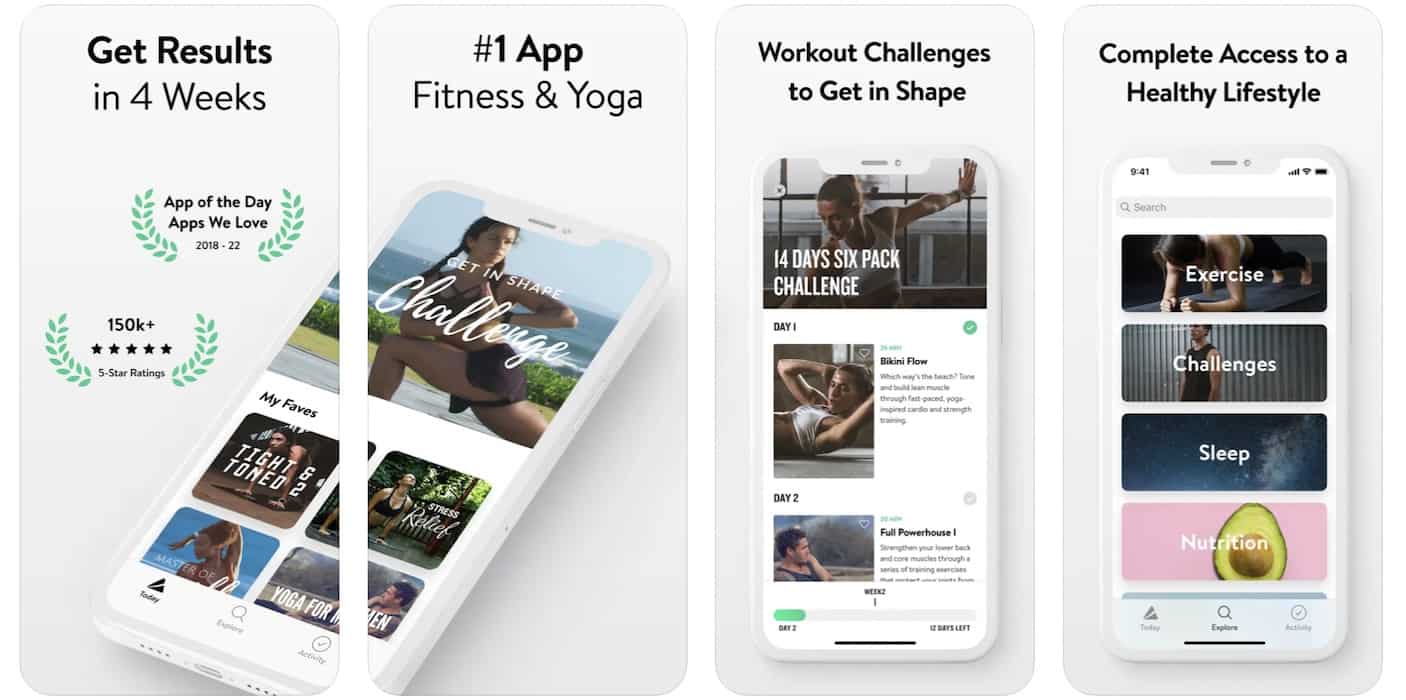
Hopefully, the app’s content is so inspiring and valuable that people will want to purchase it. So you must accept credit cards and maybe integrate in-app rewards that unlock discounts (to smoothen conversion). You could also go bonanza by introducing a crypto asset tied to in-app activities. However, this topic deserves a standalone blog.
Video casting
AirPlay and Chromecast allow users to cast a video to bigger screens. On Apple, you can also have fun with SharePlay so that customers can share some classes with friends who don’t yet have the software.
Mobile ecosystem integrations
Apple Health / Google Fit integration is one thing — that’s necessary for sharing vitals with other applications. However, ecosystem integrations should go deeper:
- offer actionable links in search results
- make yoga classes available as Siri shortcuts and suggestions
- make use of app clips
- access playlists from Apple Music, Google Play, Spotify, or similar services
I think this should be enough to get the yoga solution off the ground. If you are looking for more options before starting yoga mobile app development, check out Daily Yoga.
I’m not a fan of how they do it, but these guys seem to be piling up every imaginable feature into their yoga software.
Monetization of a Yoga App
Unsurprisingly, the most popular monetization model these days is auto-renewable subscriptions. Broadly speaking, you can mix and match, choosing from these options:
- Free: users pay nothing to download; you earn from ads, referral commissions, or by selling physical goods and services.
- Freemium: users download the app for free; you earn from in-app purchases, which can be consumables (in-app tokens unlocking classes), one-time purchases, and auto-renewable or non-renewing subscriptions.
- Paid: users pay once to download and get unlimited access to all features.
- Paymium: a combination of the paid and freemium models.
When you start, you may want to ask customers to subscribe on your website to avoid paying fees to Apple and Google. True, that’s a little less convenient for users, but you can save up to 30% of your growing income.
Tech Stack for Yoga App Development
Tech-wise, you can take completely different paths to develop an app for yoga.
For starters, you can always play with no-code app-building platforms like BuildFire. These are not bad if you’re looking for a stock-looking app without much-advanced functionality. We’re certainly not talking AR/AI here.
Also Read: Choosing a tech stack for your application
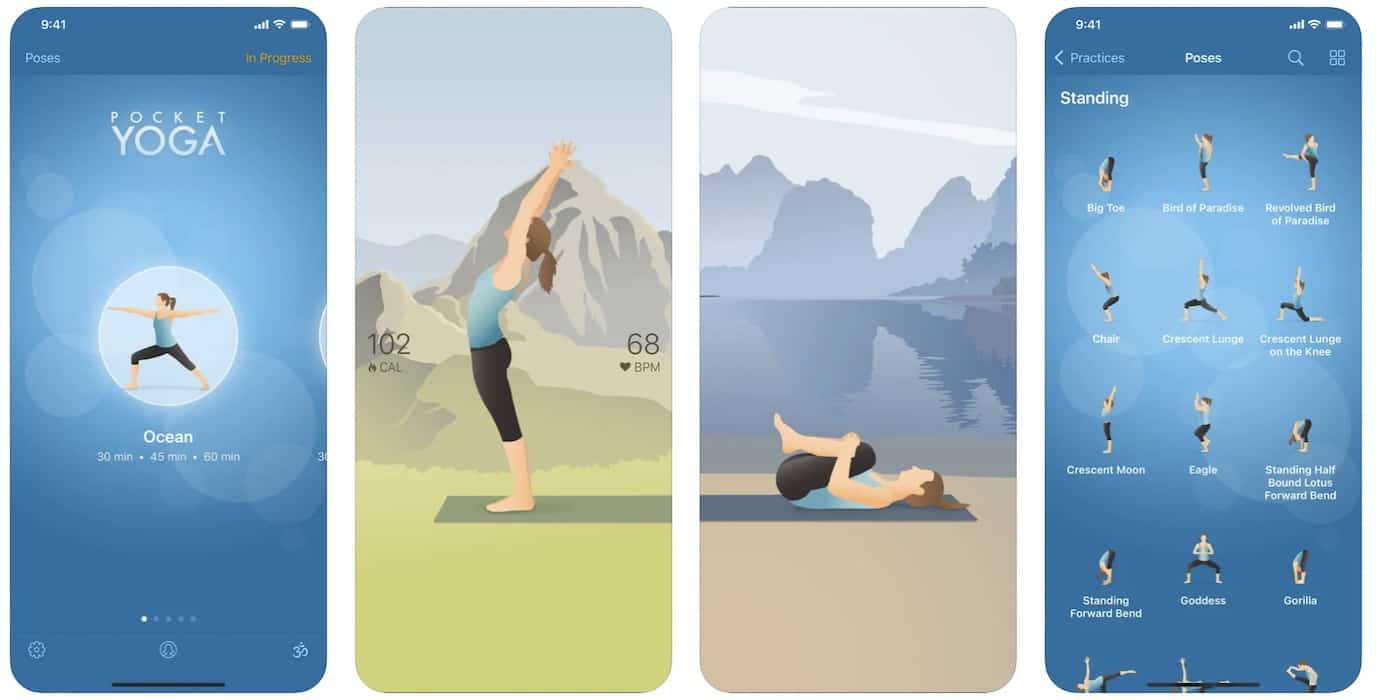
Also Read: React Native vs Flutter: The Better Choice?
Remember that your tech stack should depend on your ROI goals and app functionality. Let’s say your app will rely on video instructions heavily. That’s a lot of megabytes (and likely gigabytes) streaming to mobile devices.
For a smooth UX, you will need to handle the CDN issue (allowing customers to connect to the closest server for faster downloads). Do you know how many CDN service providers are out there? Which one do you pick? It depends on whether we need to integrate with some existing software and many other factors.
Also Read: UI/UX design tips for a winning application
I’m trying to say that technological requirements are unique for each app. There may be plenty of configurations that will work for your app. Trust your yoga app developers to pick the one that will work best.
4 Steps to Make a Yoga App
Ok, I probably shouldn’t drawl about how to research your target audience, but it’s still part of the yoga application development drill, which also includes:
- Step #1: Market research and tech assessment
- Step #2: Rapid prototype and design
- Step #3: Coding and testing (proof of concept > MVP)
- Step #4: Deployment and maintenance
Yoga app development in a nutshell
Software companies have different approaches. Some jump into coding head-first with a “ship-fast-and-break-things” mentality. Others brood over requirements till they have every nuance figured out. Here’s a brilliant explanation of how we handle app development at Topflight, taken from our general FAQs:
Step 1: Run a Discovery Workshop
This workshop is like a mini discovery phase to prioritize features, align them with your ROI goals, and decide on the tech components. More on that here.
Step 2: Start with Rapid Prototyping to validate Product-Market Fit
We create an interactive prototype — a graphical shell of your product — and test it with the target demo to make any UX/UI optimizations before coding. Note that the cost to design a yoga app is but a fraction of the overall development budget.
Step 3: Code and Launch a 3-month Proof of Concept
Any software, stripped down to its essential features, can be released within three months. The main idea here is to release something tangible for a small audience as soon as possible and keep iterating on it while processing customers’ feedback.
Step 4: Keep building in Agile sprints of 30 hrs or 60 hrs per week
This covers getting from a Proof of Concept to the Minimal Viable Product (MVP) and continuous product iteration until we hit the desired traction.
NB: deployment and maintenance happen at the end of the proof of concept phase and repeatedly during the agile development phase.
This is what you get when you work with us:
- Beautiful, validated UI/UX design that users love
- Product strategy to keep users engaged over time
- Project management for total transparency into progress
- Full-stack app development for web, mobile, IoT, and web3 (can be all part of a mobile yoga app)
- Machine learning development
- DevOps engineering to automate all repetitive dev activities, make the app hum and scale with infrastructure; add fort knox security
- QA testing automation to save developers and manual testers time
- App marketing and sales development to affordably acquire new users
Also Read: QA Testing Guide: Tips, Tricks, Best Practices
Hidden tech gems for making a yoga app
As you develop a mobile app for yoga, I recommend that your yoga developers pay attention to these items.
Updated App Clips
App clips that offer a glimpse into your app without installing anything can now store more data (up to 15 Mb), and you can download more from a server if necessary. Imagine a QR code that initiates a simple yoga routine when scanned.
Object Capture in ARKit and RealityKit
Apple has updated its toolchain for working with AR objects: users can now add real-world objects into an augmented reality scene. This technology may help create more authentic AR experiences.
Read our guide on AR mobile app development.
Lock Screen Widgets
You can add a new transparent widget to the iPhone’s lock screen to notify practitioners about their progress or to show their upcoming yoga sessions.
Responsive media playback and HLS Content Steering
AVFoundation allows you to support a more responsive and fluid interface in your app, and HLS content steering helps optimize video content distribution to various geographies by using dynamically spawned CDNs. This means uninterrupted video streaming for your customers.
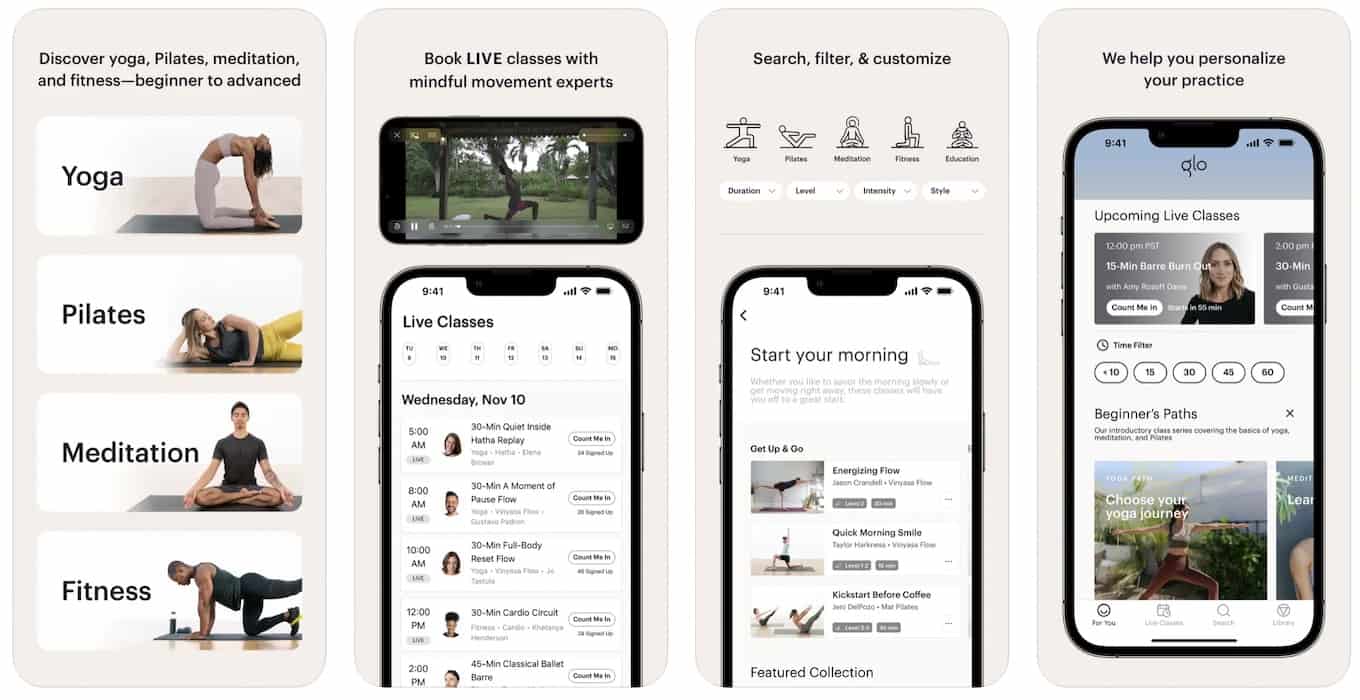
The App Intents framework helps to make your yoga app more discoverable and improve app engagement. Use the framework to integrate a yoga app experience with smart home, focus filters, and the entire iOS ecosystem — anywhere customers can access shortcuts to run actions from the app.
Now there are way more hidden gems to take advantage of:
- MusicKit updates
- Alerts from Bluetooth devices on Apple Watch
- Swift Charts
- WeatherKit
- Web Push for Safari
- Continuity Camera
However, your business goals come first. So focus on what works best for your audience.
How Much Does It Cost to Build a Yoga Application?
Here’s how pricing works if you want to develop a yoga app with Topflight.
- Rapid Prototype Full if you have no design assets ($15,000 – $20,000)
- Rapid Prototype Lite if you already have some UX design assets ($10,000 – $12,000)
- A 3-month launchable proof of concept ($80,000 – $90,000)
- Continuous development post PoC in Agile sprints of 30 hrs or 60 hrs per week ($15,000/mo or $30,000/mo).
The last part covers getting from a Proof of Concept to the Minimal Viable Product (MVP) as well as continuous product iteration until we hit the desired traction.
Also Read: App Development Costs: Budgeting for your app
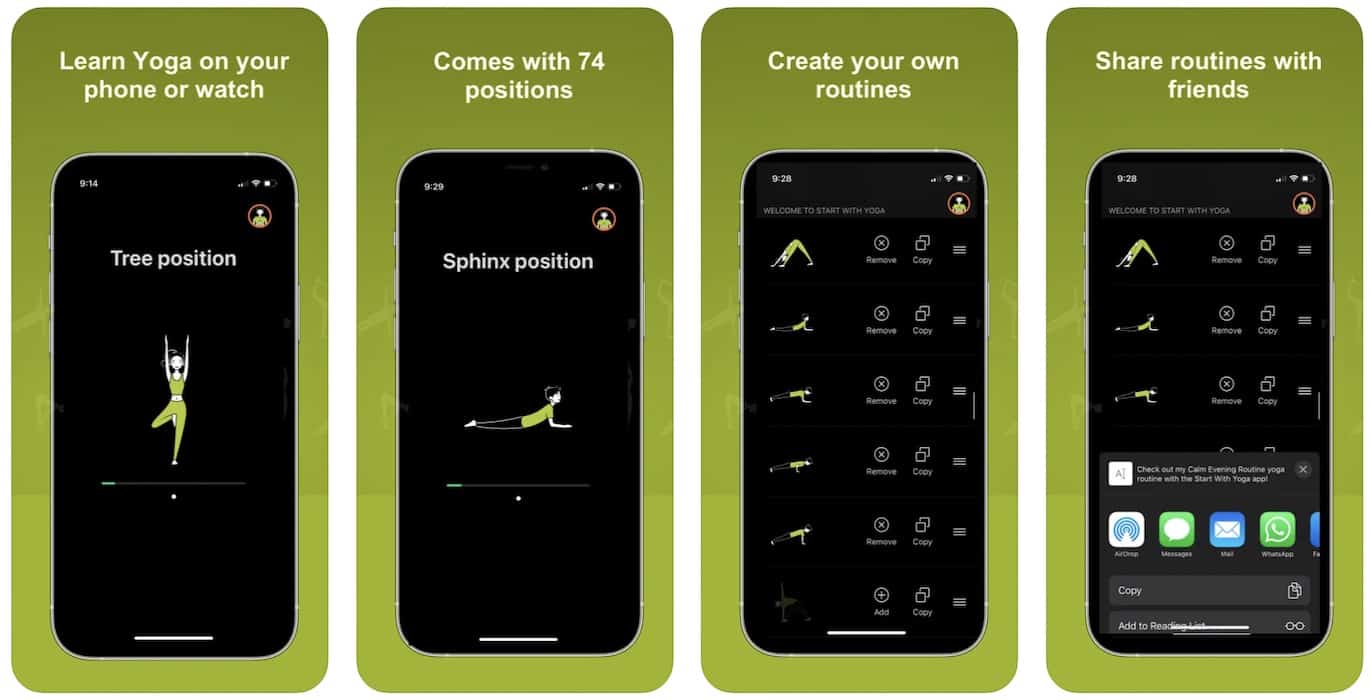
Topflight Experience in Yoga App Development
We haven’t worked on a dedicated yoga app yet. However, our experience delivering wildly successful fitness apps like Walker Tracker and Habitap should speak for itself. Please pardon my bravado here, but the team will never say things like this; I just have the benefit of being one of “Oh, those marketing people!”
If you have questions about online yoga app development, contact our experts.
Related Articles:
- Pose Estimation Guide
- Diet and Nutrition App Development
- Wearable App Development Guide
- How to develop a habit tracking fitness application
- Build a fitness tracker app like Peleton
- Calorie Counter App Development
[This blog was originally published on Oct 5, 2022 and has been updated for more recent data]
Frequently Asked Questions
Is there a specific technology stack that's perfect for a yoga app?
We’d probably stick with React Native simply because we can launch faster on iOS and Android, and we know the ins and outs of this framework. However, you could go with Flutter, native apps, or use something like Angular to build a PWA yoga app. Remember that the tech stack should align with your business goals, not the other way around.
Can I send push notifications to my app users based on their location?
Yes, using Apple’s default notification services or integrating with dedicated providers like Pushwoosh.
Give me another idea for a killer feature.
Ok, here’s one thing I’d love to see. How about supplying 3D images with poses so the user can rotate and zoom in/out to scrutinize each pose?
What's the best monetization strategy for yoga apps?
Subscription. However, I know at least one top-performing yoga app (Pocket Yoga) with a pay-to-download model.
How long will it take to develop a yoga app?
Between three and six months.
